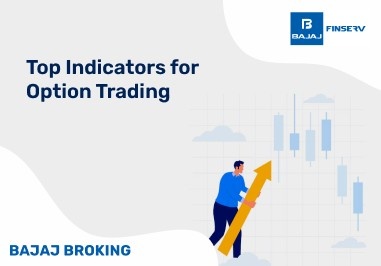Stress testing is a process typically performed in an industrial setting to ascertain whether a product, a service, or a system is resilient and has the capacity to perform under extreme pressure.
For example, if we want to stress test a bank, we have to examine how it will perform in extreme situations, like a severe recession, an extreme stock market shock, or massive interest rate fluctuations.
The objective of stress testing is to improve the robustness of a product, a service, or a system so that it can withstand extremely unfavourable situations. Read this blog, as it digs deep into this topic with the help of practical examples of stress testing.
Understanding Stress Testing Across Industries
Stress testing is used across a range of industries to improve their processes. Let us take a few examples of stress testing to understand it better. In the software industry, stress testing is used to figure out whether a software can handle extremely high volumes. Imagine an airline launching its website. It has to test whether its website can work seamlessly when millions of passengers will use it to book a flight.
Similarly, stress testing is used in the manufacturing sector as well. For example, before launching a car, manufacturers simulate head-on collisions, wherein cars are driven into barriers to check the quality of a car’s structure, airbags, and seatbelts.
For individuals, one of the most relatable types of stress tests is when they are told to walk on a treadmill at varying speeds. It is called “a treadmill stress test,” which helps a doctor determine whether an individual’s heart can respond properly to physical exertion or not. Hence, stress testing is quite common in the healthcare sector, too.
Additional Read: Why Portfolio Diversification is Crucial for Your Investments
Stress Testing In Financial Institutions
Stress testing is extremely useful in the case of financial institutions. This is because several large and reputed financial institutions have gone bust over the years.
For example, during the 2008 Global Financial Crisis, many top firms collapsed, including Lehman Brothers, Bear Stearns, and Washington Mutual. But, you may still wonder why a financial institution has to stress test.
Suppose housing loans form 30% of a bank’s loan portfolio. Hence, it has to analyse how it can survive if most of its borrowers are not able to pay their loans due to a recession.
Let us take another example. Suppose an insurance company is selling property insurance in an earthquake-prone area. It has to analyse how it will pay claims if an earthquake causes significant property losses in that area.
Regulatory Stress Testing
As banks and financial institutions have a far-reaching impact on an economy, they are often subject to regulatory stress testing. For example, as per Basel-III norms, banks are expected to maintain a capital-to-risk-weighted assets ratio (CRAR) of 8% or higher.
CRAR shows how much capital a bank has when compared to the risk of its assets like loans and investments. The higher the risk of a bank’s assets, the more capital it needs.
Let us say that a bank is providing loans at a high interest rate to a set of borrowers, who have a high probability of not paying back the loans. To protect its shareholders, it will have to keep sufficient capital to deal with the possibility of such loans not being repaid.
Types of Stress Testing
The main types of stress testing are explained below:
Historical Stress Testing: In this type of stress testing, past extreme events or crises are used to assess a product’s or a system’s performance. The objective is to check how a system or a product will perform if a past historical shock were to reoccur.
Hypothetical Stress Testing: As the word “hypothetical” suggests, in this kind of testing, a future or unforeseen event is imagined to analyse how a system or a product will perform if such an event were to actually happen. A hypothetical event in this case can be an extreme geopolitical event like a war or a severe economic recession.
Simulated Stress Testing: In this method, we use virtual scenarios created by computer models to simulate stress events to check a system’s or a product’s performance under such events. Monte Carlo simulation is a widely used method for this kind of stress testing.
Advantages and Disadvantages of Stress Testing
The advantages and disadvantages of stress testing are explained in the table below:
Advantages
| Disadvantages
|
Stress testing helps businesses understand the measures they need to take if an extreme event happens.
| Stress testing can be complex and costly. To perform this, an organization has to build scenarios for extreme events, which takes a lot of data and effort. Hence, it may not be possible for all sorts of companies to carry it out.
|
Stress testing helps enterprises understand their vulnerabilities, which enables them to take corrective action.
| Whether you use historical, hypothetical, or simulated stress testing, there is a possibility that the extreme scenario that you have created misrepresents the real risk your business is facing.
|
If an organization clearly communicates the results of a stress test, it helps to improve the confidence of stakeholders because they feel that the organization has a proactive approach to risk management.
| Often, organizations have to use external resources to conduct stress testing, which requires time and money.
|
Conclusion
The market participants who invest regularly using their trading accounts should develop an understanding of stress testing. By understanding the fundamentals of stress testing, they will be able to ascertain whether the companies in which they have invested are performing such tests to strengthen themselves against eventualities. If they are investing in banks and other financial companies, they should also understand the regulations governing stress testing and read annual reports to figure out if such institutions are performing stress testing or not.
Disclaimer: Investments in the securities market are subject to market risk, read all related documents carefully before investing.
This content is for educational purposes only. Securities quoted are exemplary and not recommendatory.
For All Disclaimers Click Here: https://bit.ly/3Tcsfuc














